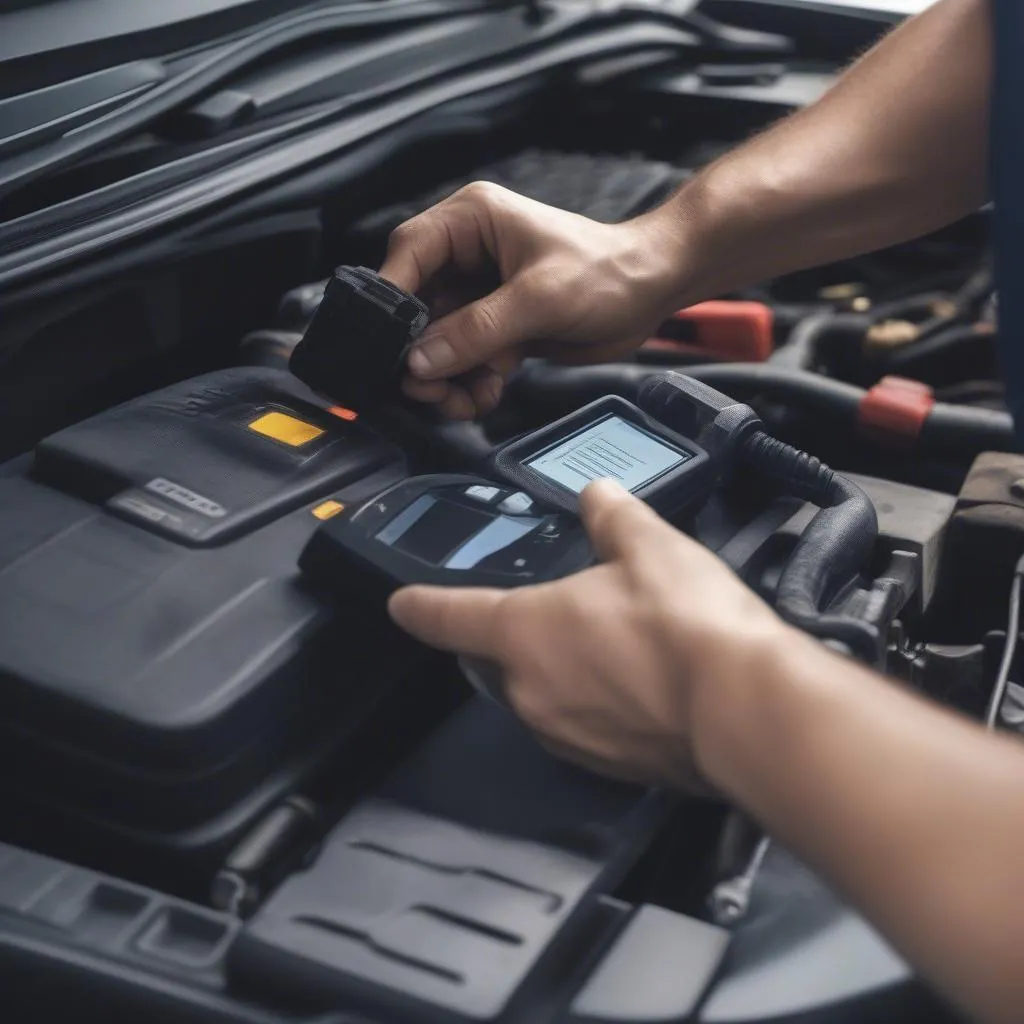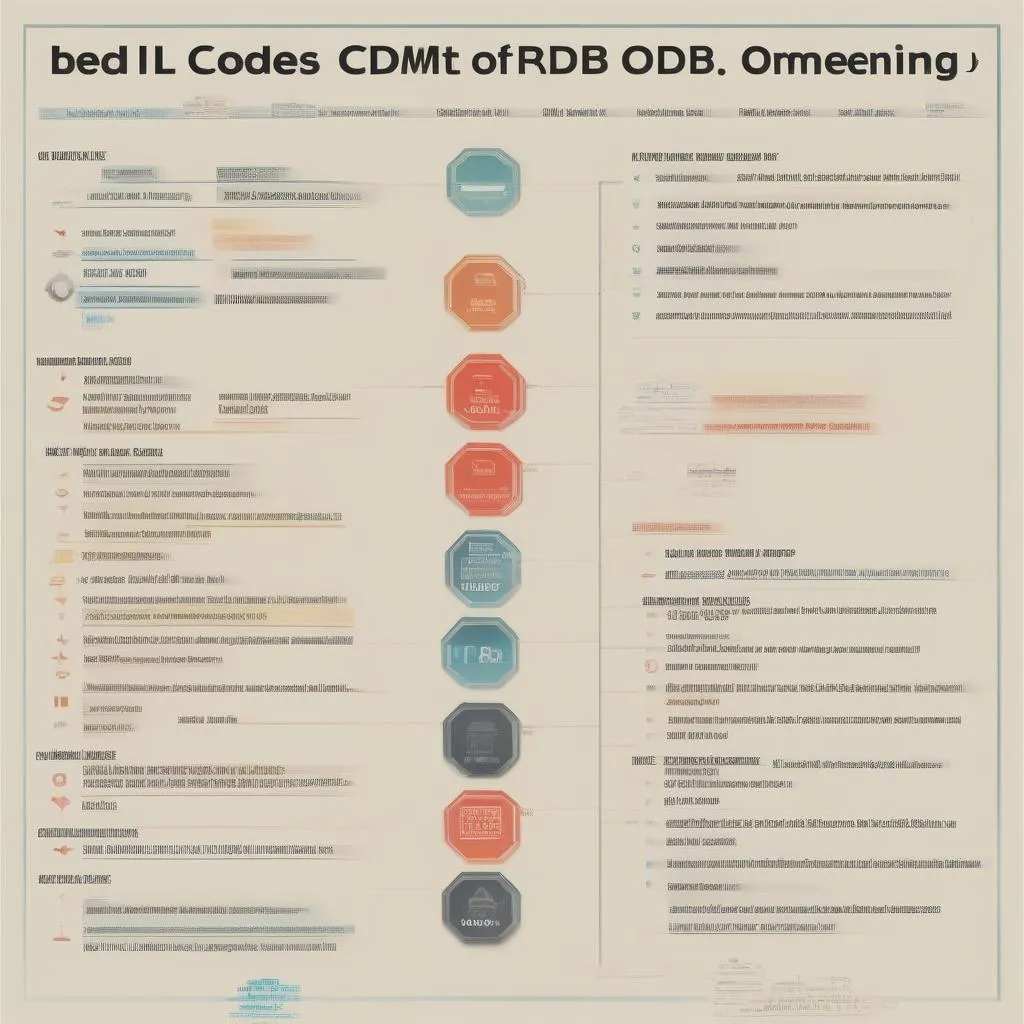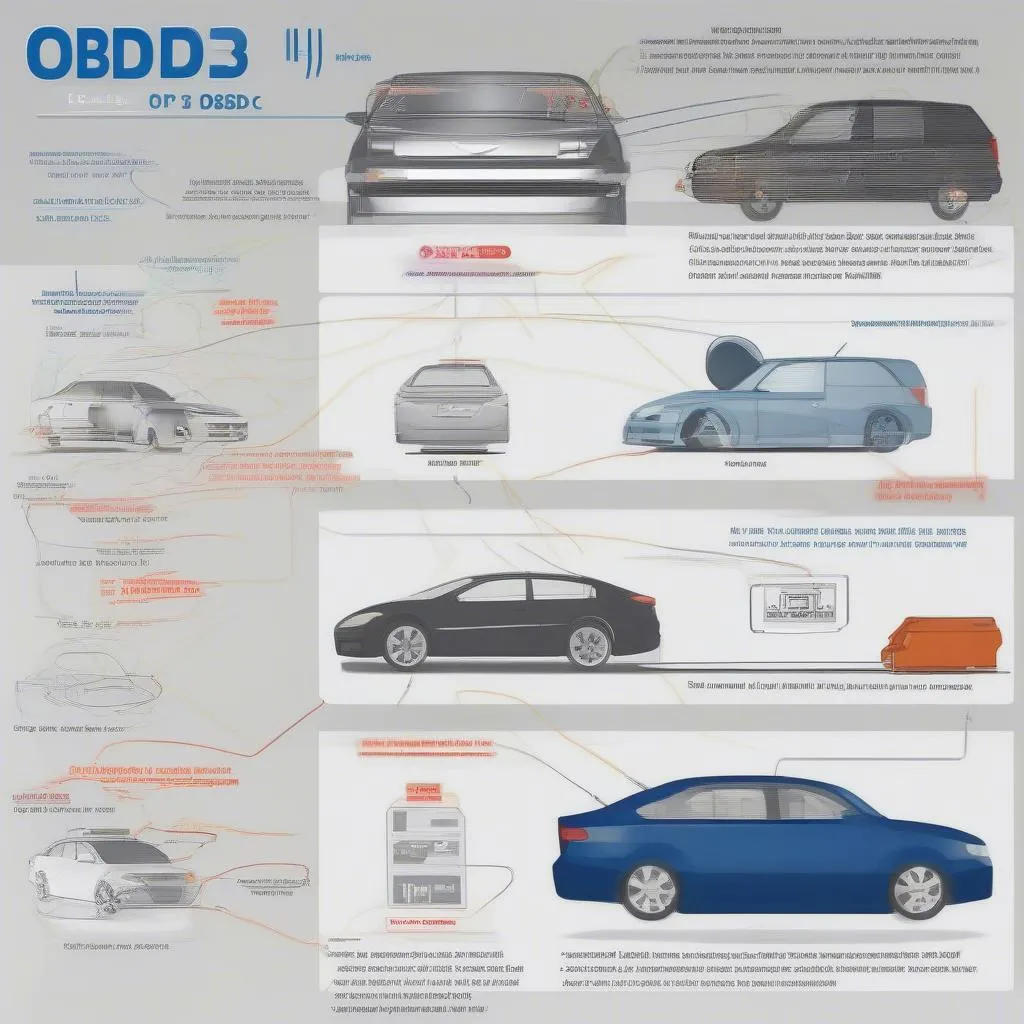Have you ever wondered what those mysterious lights on your dashboard mean? Or maybe you’ve experienced a sudden decrease in your car’s performance and had no idea what was wrong. We’ve all been there! That’s where Obd Ii Codes come in. These codes are like a secret language your car uses to communicate with you, telling you about potential problems that need attention.
What are Obd Ii Codes?
OBD II stands for On-Board Diagnostics II, a standardized system that was first introduced in the United States in 1996. It’s essentially a self-diagnostic system for your car, constantly monitoring various engine and emissions-related components. Think of it as your car’s internal doctor, always checking for issues and reporting them to you in the form of these codes.
The Meaning of Obd Ii Codes
OBD II codes are a combination of letters and numbers, and each code corresponds to a specific problem. For example, a code like “P0300” might indicate a misfire in your engine, while “B1234” could point to a fault in your car’s anti-lock braking system.
How to Read Obd Ii Codes
There are two main ways to read OBD II codes:
1. Using a Diagnostic Scanner
A diagnostic scanner is a specialized tool that plugs into your car’s OBD II port (typically located under the dashboard). The scanner then communicates with your car’s computer system and displays the relevant codes. This method is often preferred by mechanics because it provides more detailed information.
2. Using a Smartphone App
Several smartphone apps are available that can read OBD II codes using a Bluetooth adapter connected to your car’s OBD II port. This method is a more convenient option for those who don’t want to invest in a dedicated scanner.
Common Obd Ii Codes & Their Meanings
While OBD II codes can be a bit daunting at first, understanding their meaning is not as complicated as it might seem. Here are some of the most common OBD II codes and their potential causes:
P0171: System Too Lean (Bank 1)
This code indicates that the air-fuel mixture in your engine is too lean. This can happen due to several reasons, such as a faulty oxygen sensor, a leaking vacuum hose, or a clogged fuel injector.
P0300: Random/Multiple Cylinder Misfire Detected
This code signifies that your engine is experiencing a misfire in one or more cylinders. This can be caused by a variety of issues, including faulty spark plugs, ignition coils, or fuel injectors.
P0420: Catalyst System Efficiency Below Threshold (Bank 1)
This code indicates a problem with your catalytic converter. This could be due to a clogged catalytic converter, a faulty oxygen sensor, or even a leaking exhaust manifold.
How to Interpret and Troubleshoot Obd Ii Codes
Once you have an OBD II code, the next step is to understand what it means and how to troubleshoot the problem. Here are some helpful tips:
- Look up the code: Several online resources and manuals can help you decipher the meaning of the code.
- Consider the symptoms: Do you notice any other symptoms, such as rough idling, engine sputtering, or a decrease in fuel efficiency?
- Start with the basics: Make sure to check the obvious things first, like spark plugs, ignition coils, and fuel injectors.
- Seek professional help: If you’re not comfortable diagnosing and repairing the issue yourself, it’s always best to consult a qualified mechanic.
Tips for Avoiding Obd Ii Codes
While it’s impossible to avoid OBD II codes altogether, there are things you can do to minimize their occurrence:
- Regular maintenance: Following your car’s recommended maintenance schedule, such as oil changes, tune-ups, and air filter replacements, can prevent many common problems.
- Use high-quality fuel: Using premium or high-octane gasoline can help keep your engine running smoothly and reduce the risk of misfires.
- Avoid aggressive driving: Driving aggressively can put undue stress on your engine and increase the likelihood of problems.
Obd Ii Codes: Your Car’s Friend or Foe?
OBD II codes can seem intimidating at first, but they are a valuable tool for maintaining your car’s health. Understanding how to read and interpret these codes empowers you to diagnose and address potential problems before they become major issues.
Frequently Asked Questions about Obd Ii Codes
Q: Can I clear Obd Ii Codes myself?
A: Yes, you can clear OBD II codes using a diagnostic scanner or a smartphone app. However, keep in mind that clearing the codes won’t fix the underlying issue.
Q: Do Obd Ii Codes always mean a serious problem?
A: Not necessarily. Some codes might indicate minor issues that can be easily addressed. However, it’s always best to address any OBD II code, as it could potentially escalate into a bigger problem.
Q: How often should I check for Obd Ii Codes?
A: It’s generally recommended to check for OBD II codes every few months, especially if you notice any unusual driving symptoms.
Connect with Us
If you’re experiencing problems with your car’s OBD II system, please reach out to us at +84767531508 for assistance. Our team of experts can help you diagnose and troubleshoot any issues you might be facing.
 OBD II Scanner
OBD II Scanner
 List of OBD II Codes
List of OBD II Codes
 OBD II Code Chart
OBD II Code Chart
Let us know in the comments below if you have any questions about OBD II codes. We’re here to help!